Call US
24/7
Free Confidential case Evaluation
(813)922-0228Call US
24/7
Free Confidential case Evaluation
(813)922-0228Loading...

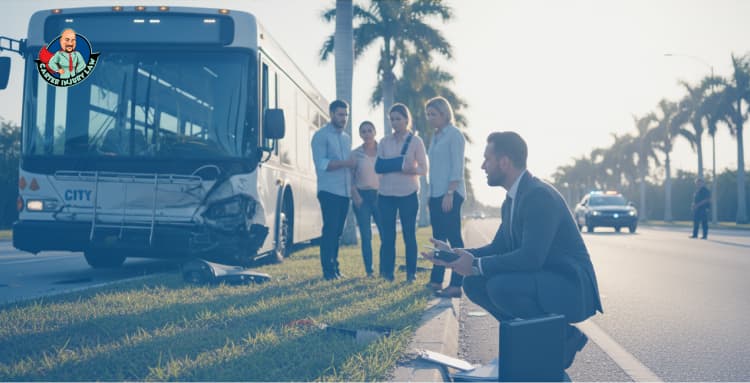
Bus accident injuries in Florida can turn a regular day into a series of hard choices. I have seen people walk into my office with confusion in their eyes, still carrying the sound of screeching brakes in their memory. They are not just here to fill out forms or talk about compensation. They are here to make sense of what happened to them and how to take the next step without feeling lost.
When I first started Carter Injury Law, I promised to make sure no one had to face that silence alone, the silence that comes after the noise of an accident fades and the reality sets in. Every case tells its own story, but it always begins the same way, with a question that changes everything.
The first few moments after a bus accident are strange. Time slows down, but everything still moves too fast. People look around, dazed, trying to understand who is hurt, who needs help, and what just took place. I tell people to hold on to those moments, because what you notice right then often becomes the foundation of your case.
Before anything else, make sure you are safe. Get medical attention if you think you are in need of it. I have seen too many people walk away from a crash believing the pain will fade, only to wake up the next morning unable to move their neck or lift their arm. Documentation from a doctor helps, but more than that, it protects your health, which always comes first.
If possible, take photos of the scene. Capture the bus, the road, the lights, and the traffic signs. Note the weather, the time, and the direction of travel. If the police arrive, stay calm and describe what you saw in your own words. Do not guess or fill in blanks.
Your statement will become part of the official report that shapes how fault is determined later. The law will come in, but at this moment, you are the witness to your own story. And that story needs to start clearly.
Contact the authorities if that has not already happened. A police report captures the position of the bus, other vehicles, and pedestrians. It notes what the officers observe, which can be critical later when determining liability.
If you can, write down everything you remember. Even small details like which lane the bus was in, how fast it seemed to be moving, or the reactions of other passengers can become important. Memories fade and stories change, but a written record from the first day preserves your version of events.
Collecting evidence goes hand in hand with reporting. Keep copies of any medical records, photographs, or videos from the scene. If someone else was involved and offers their account, make a note of it. Every piece of information creates a clearer picture of what happened.
At this stage, understanding the steps is one thing, but knowing the impact they will have later is what truly matters. How you document, how you report, and how you hold on to the facts can define the outcome of your case long before any negotiations start.

The moment you realize the accident has left more than just bruises, reaching out to a lawyer can feel like admitting you need help, but it is really about taking control. I tell people that the earlier you speak to someone who understands the local legal system, the stronger your position becomes.
A lawyer’s role is connecting the dots others might overlook. I listen to every detail, even the ones that seem small or unrelated. Sometimes what looks like an insignificant gesture, like a bus driver’s reaction or a broken handrail, becomes central to proving responsibility.
Waiting too long to ask for help costs more than anyone tells you at first. Time starts to blur the edges of what happened. However, Insurance companies do not wait, they start building their own version of the story before you have even caught your breath. When you reach out early, we freeze that moment before it slips away.
I track down the records, talk to the people who saw what you lived through, and help you find the right words when others try to twist them. That early call not only protects your case but also protects your story from being rewritten by someone who was never there.
After a bus accident, money is never the first thought, but sooner or later it becomes part of the story. Medical bills start to collect in quiet stacks, paychecks stop coming, and the small comforts of daily life begin to feel out of reach.
Florida law does not only count the hospital visits or the broken bones. It measures the hours you could not work, the nights you did not sleep, the therapy sessions you did not plan to need. It considers what pain has taken from your rhythm, your confidence, and the simple things that used to make up an ordinary day.
When I work with someone, we start from the ground up. First, the obvious costs, like the ambulance ride, the medication, and the endless appointments. Then we look wider. What changed in your life that you did not choose? Did the accident make you miss time with your family, step away from a career you built, or live with a pain that has its own schedule? Those questions matter as much as any receipt.
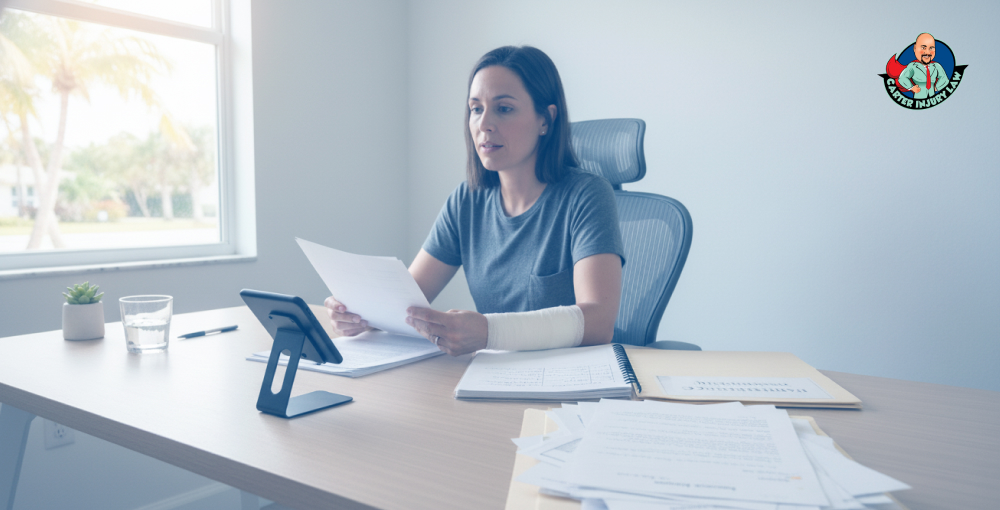
Insurance calls start soon after the accident. They sound polite, helpful, and even concerned. However, do not feel pressured to accept quick offers from insurance companies. It is to protect the company, often at your expense. I tell people to pause, breathe, and avoid giving detailed statements before they know their rights.
A casual comment about pain fading or a minor injury can later be used to reduce your claim. If an insurance company asks for a recorded statement, you do not have to agree. You are not being difficult; you are protecting yourself.
Keep a log of every interaction. Note names, dates, times, and what was said. Copies of letters and emails should be saved in a dedicated folder. It might feel tedious now, but this record becomes a map of the conversation, showing exactly what was communicated and when.
I guide people on how to respond confidently without creating liability. Sometimes it is as simple as saying, I am speaking with my lawyer before I provide information. Other times, it means redirecting questions to written communication. The point is to stay in control.
When you handle insurance company this way, the difference between a rushed settlement and fair compensation becomes clear. The accident has already disrupted your life enough. Communicating carefully ensures it does not control the next chapter.
Sometimes the paperwork and photos are not enough. Some cases need to move into the legal arena, where the accident and everything it left behind become part of the record. Every bruise, every lost hour, and every sleepless night needs to be seen.
I sit with people and go through every detail, from medical records to photographs to the quiet statements of those who witnessed it. Each piece builds a picture of what actually happened and what it took from them. Seeing it all together often brings a kind of clarity that was impossible in the days right after the crash.
I explain what comes next so there are no surprises. We talk about how the process works, what the bus company’s legal team might try, and how we respond. When you understand each step, the uncertainty starts to shrink, and the path forward begins to feel solid again.
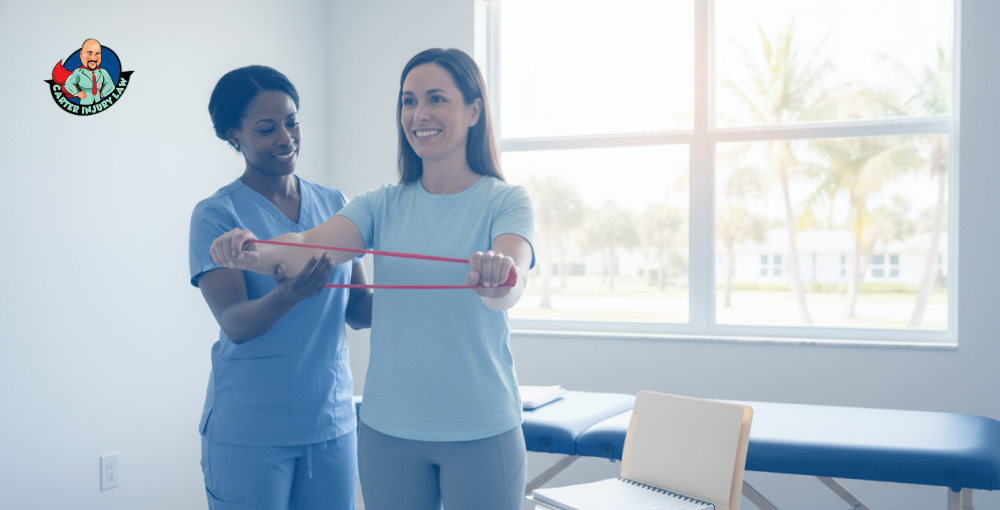
When I sit with someone who has been hurt in a bus accident, I often ask them to tell me what “normal” used to feel like. For example, I once worked with a school teacher in Tampa who took her local bus every morning. After the crash she couldn’t climb the classroom steps anymore and she cancelled weekend outings she once loved.
We began by naming the losses of daily commute she took, the ease of movement, and the simple pleasure of being on her feet without pain. From there we made a plan for physical therapy, carefully documented treatment, conversations about how this would affect her income, and legal guidance so she wouldn’t be facing the recovery process alone. Over time she began to feel like she was rebuilding rather than just surviving.
There are stories out there that show the legal system can respond meaningfully when people are harmed. For instance, consider the case of Aurora Beauchamp who was struck and dragged by a bus while crossing a street in New York, then lived in Florida. The jury awarded her $72.5 million for the trauma, permanent injury, and life changes she endured.
While every case is different and not every outcome looks like that, this shows that courts do take these incidents seriously and that you don’t have to accept less than your rights.
We handle cases like these on a contingency fee basis, so you do not pay anything unless we secure a win for you. Legal support should never be out of reach, especially when life has already taken more than its share.

The top hidden risks of riding a scooter in Florida include lack of protective gear, distracted drivers, uneven or slippery roads, limited insurance coverage, and unpredictable traffic from tourists and locals. These factors make scooter accidents more likely and often more serious than most riders expect.
Florida’s roads hold a strange beauty. Palms cast their thin shadows over asphalt, and everything smells faintly of heat and rain. However, beneath that beauty live uneven pavement, drivers distracted by screens, and rental scooters that promise simplicity but deliver chaos. The state’s growing number of scooter riders are stepping into a system that was never designed for them.
I write this not as a warning, but as something closer to truth told from experience. These stories are about the five biggest risks that shape every ride through Florida and what I have learned from those who never saw them coming.
One afternoon, I drove to the scene of a case in St. Petersburg. The city was quiet after a storm. Water glistened in shallow puddles that caught the sunlight like glass. A rider had gone down there, thrown by a patch of sand that washed from a nearby construction site. It was the kind of accident that should never have been possible, yet it happened because no one thought to sweep the road.
That’s not a rare story. I have seen roads where city maintenance blurs into county jurisdiction, where no one takes responsibility until someone is hurt. A single neglected pothole can turn into a question of liability that moves between insurance companies and public agencies for months.
For riders, the danger begins in those unnoticed details. Loose gravel, faded lane markings, broken drainage grates are each a small test of balance that cars never notice. Most people assume the state’s sunshine makes for gentle riding, but the truth is that heat warps asphalt and rain hides the damage. Florida’s beauty is both a blessing and a disguise.
The road remembers everything. It holds the stories of riders who fell, of drivers who never saw them, of cities too stretched to mend the cracks in time. In my office, I listen to those stories retold by people trying to make sense of what happened. And every time, I am reminded that a smooth ride in Florida often depends on luck more than it should.

I once handled a case in Miami that began with a sound no one ever forgets. A rider was crossing Biscayne Boulevard when a driver, lost in a text, drifted into the bike lane. When I met her later in the hospital, she told me she had seen the driver’s face a second before impact, his eyes fixed on something glowing in his lap.
This is what I see most often now. Drivers looking down instead of ahead. Hands too busy with phones to turn the wheel in time. I have read police reports where the moment of distraction lasted less than 3 seconds, but in those seconds a scooter became invisible. The human brain edits out what it does not expect, and most drivers still do not expect a scooter beside them.
In Florida, distraction is its own epidemic. Sunlight flares against windshields, palm leaves flutter in the corner of vision, and phones buzz like restless insects. A rider cannot predict what the driver behind them will do, and by the time they can, it is usually too late. The law calls it negligence, but what I see is the collapse of attention in a world that keeps asking for it.
When I speak to new clients, I tell them that being visible on the road is a full-time act. Bright clothing, steady speed, constant awareness. It feels unfair that the smaller vehicle must shoulder the greater vigilance. However, the truth is, safety often belongs to the one who notices first.
Most people do not realize how exposed they are until after the crash. I meet them in quiet rooms at my office when the hospital bills begin to arrive and the calls from insurance companies grow less kind. They always tell me that they thought their insurance would cover them. Florida law, however, has a way of revealing the gaps only after it is too late.
In this state, scooters occupy an uneasy space. They are neither motorcycles nor bicycles in the legal sense. Under Florida Statute 316.003(44), a “motorized scooter” is defined as a vehicle without a seat that cannot travel faster than 20 miles per hour on level ground. Because of that technicality, most scooters are not required to be registered, insured, or even titled. It sounds freeing until the accident happens, and the injured rider learns that no insurance coverage often means no compensation for medical costs.
Personal Injury Protection, or PIP coverage, is another hidden trap. Florida’s no-fault law, under Statute 627.736, requires PIP for cars, but it does not apply to scooters. That means a rider thrown from a scooter has no automatic access to the medical and wage benefits that drivers take for granted. The result is a kind of legal limbo, where your recovery depends on whether another driver was involved and whether they carried bodily injury coverage.
This is where law turns into lived experience. A simple ride to the store can spiral into a rabbit hole of claims and counterclaims. I have seen people forced to choose between medical treatment and rent while insurance companies debate definitions written decades ago. The law catches up slowly to new forms of travel.
When I explain these things to clients, I tell them that preparation is not paranoia. Checking a policy, adding uninsured motorist coverage, or carrying private medical protection is not fear. Florida’s sun makes everything look simple, but simplicity is often the mask that danger wears.
Every time I read a statute or draft a claim, I think of those empty lanes where the accident began and how silence follows after the fall. The law will eventually speak, but for the rider, the cost of that silence is already written in ink and bone.
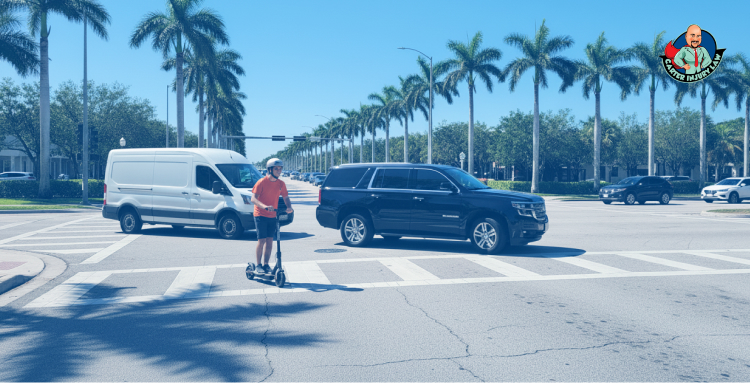
I have walked the corners of Florida cities long after the traffic lights stopped pulsing. There is a strange geometry to these places, where a scooter rider’s perspective collides with streets built for cars.
Sight lines are rarely what they seem. Palm trees cast sharp shadows that hide movement. Parked cars block entire lanes from view. Even a simple right turn can feel like threading through a forest of blind spots. Florida law, under Statute 316.130, requires drivers to yield at intersections, but it does not protect against mistakes or the inattention that so often follows. Responsibility exists, yes, but accidents happen in the milliseconds when human perception fails.
I have seen intersections where the paint has nearly disappeared, replaced by faint streaks worn down by tires over decades. I have studied police reports where riders were invisible not because of speed or recklessness, but because the road itself failed them.
Nighttime is worse. Streetlights flicker or do not exist. A scooter’s small frame disappears into the shadows, leaving drivers unaware until impact. I remember one case in Tampa, where a rider’s reflective jacket caught just enough light to avoid catastrophe, but not enough to prevent serious injury. The law will sort out liability afterward, but at the moment, visibility is all that matters.
One summer, in Orlando near the theme parks, a student named Marco was riding home from his night shift. A tourist, navigating with a phone in one hand and a bag in the other, swerved across his path. Marco’s injuries were serious, but the confusion that followed was worse.
Insurance companies argued over liability. The rental company claimed the rider had assumed the risk. Florida law, under Statute 316.008, holds vehicle operators responsible for care on the road, but in practice, enforcement gets tangled when tourists and locals collide.
Rental scooters are everywhere. Companies promise convenience and adventure, but the laws that protect riders lag behind technology. Users often assume helmets and rules are optional, while local riders must anticipate the unexpected at every turn. I have seen the consequences: broken bones, hospital stays, and legal battles that stretch for months.
It is not just a matter of negligence. Tourists’ inexperience compounds risk, and for someone who rides regularly, those streets feel like a patchwork of danger zones. I counsel riders to treat rental scooters as wild animals in the cityscape. Stay alert, maintain distance, assume nothing, and protect yourself with reflective gear and caution.
In my office, I witness both sides of the locals who never expected an encounter and visitors who never realized what a street could demand. The Tamiami Trail, Miami Beach, and Tampa avenues all carry these stories, waiting silently for the next collision of freedom and oversight.
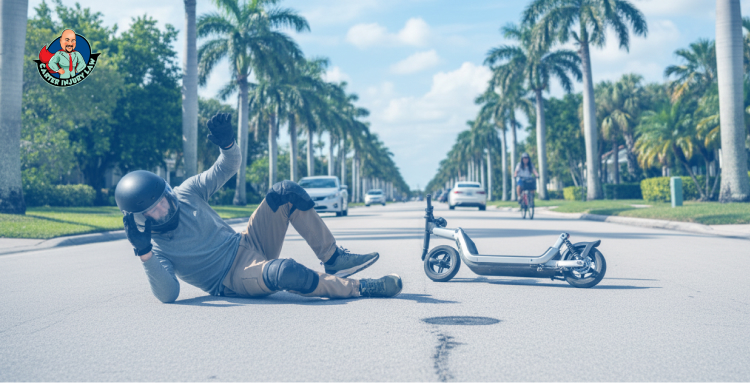
I rarely get to talk about falling. My work at Carter Injury Law exists in the aftermath, where broken bones and shattered confidence are the first words of every story. Yet I have learned that how a rider falls can matter almost as much as why the accident happened.
The first lesson is to roll. I have seen hands shattered by instinctive grabs at pavement. When a rider tucks and rolls with the motion of the fall, the body absorbs the impact across muscles instead of concentrating it on fragile bones.
Keep the chin tucked. I remember a young man in Sarasota whose instinct left his neck exposed. A small misjudgment turned a minor accident into a spine injury. Clothing matters too. Long sleeves and sturdy pants can turn scrapes into something manageable, while sneakers with solid soles protect the feet from the jagged surprises of asphalt.
Release the scooter. Let it go. I have counseled riders who tried to hold on, only to have the machine crush a limb or twist in ways that magnify injury. It is replaceable. You are not.
Every accident begins with a moment. How you move in that moment shapes the story that follows, and sometimes, it is the difference between being another case file and walking away with only a scar to remember it by.
I have answered calls in the quiet hours, when the streets are dark and the world seems paused. The voices on the other end carry shock, pain, and confusion. They describe a moment that happened too fast for memory to catch, a second that rewrote their lives. That second becomes the story we trace, piece by piece, trying to make sense of what the law can fix and what it cannot.
Florida statutes provide a framework, but they are not the same as understanding the human cost. Statute 316.130 ensures right-of-way rules, 627.736 explains insurance protections, but none can replace the seconds lost in the crash itself.
Each case teaches me something. The law can assign fault, enforce compensation, and hold negligent drivers accountable. It can map liability between rental companies, city maintenance departments, and distracted drivers. However, the first seconds of an accident are private, invisible, and impossible to reclaim.
In every phone call, in every meeting at my office, I carry the weight of those first seconds. They are the reason I write, the reason I advise, and the reason I hope that every rider who reads this will take the quiet moments before the ride seriously. Because once that second passes, the law will follow, but it cannot undo what has been lost.
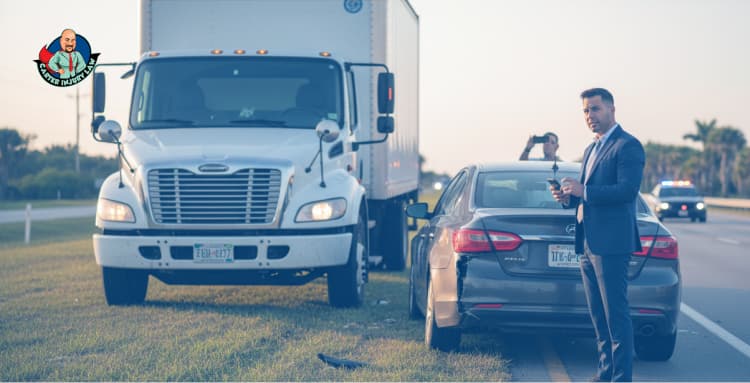
I’m David Carter from Carter Injury Law, and if you are reading this, chances are you just went through a crash that has thrown your life off balance. I’ve seen how quickly one moment of distraction or one miscalculation behind the wheel can turn into medical bills, insurance calls, and a lot of questions you do not know how to answer.
Most people think they just need to call the police and exchange information, but there is more at stake than that. Every choice you make after a crash can affect your recovery, your rights, and the compensation you may be entitled to.
In the next few minutes I am going to walk you through what I tell everyone who calls me after a delivery truck accident in Florida. Step by step we will cover what to do first, what to document, and how to protect yourself. But before we get to all of that, there is one thing almost everyone misses at the scene that can change the outcome of your case completely.
The very first thing I tell anyone who calls me after a delivery truck accident is to take care of yourself. You might be focused on the chaos around you, but if you are hurt, you cannot save the day or even get through the next few hours without help.
Call 911 if there are injuries or significant damage, and do not ignore even minor aches or soreness. Some injuries, like whiplash, do not show up immediately, but they can haunt you for months if untreated.
I always recommend going to a doctor. Florida law requires prompt medical attention to qualify for Personal Injury Protection benefits. It might feel inconvenient, but getting checked ensures you and your claim are protected. I have had clients shrug off a doctor visit only to face bigger problems later.
Safety also includes the scene itself. If possible, move to a safe spot and avoid putting yourself in danger from traffic or other hazards. It may not feel glamorous like a TV rescue scene, but staying safe is the real hero move here.
Next, I want to tell you why documenting everything at the scene is more important than most people realize and how it can change the course of your case.

After you have made sure you and anyone else are safe, the next step is to document everything. I tell my clients what you see, what you touch, and what you record at the moment can be the difference between winning a case and struggling to prove your story later.
Start with photos. Take clear shots of the vehicles, the damage, the road, traffic signs, and even skid marks. Think of it like capturing a scene for a movie. Every detail matters, and later no one will remember exactly what they saw.
Get the contact information of the driver and the delivery company. Jot down names, phone numbers, license plate numbers, and insurance details. If there are witnesses, ask them to describe what they saw and collect their contact info. In court or during negotiations, these statements can be invaluable.
Keep a written record for yourself as well. Note the time, the weather, what the traffic was like, and any unusual circumstances. Small details that seem unimportant now often become crucial when insurance adjusters or lawyers review the case.
The evidence you collect here sets the foundation for everything that comes next, including protecting your rights and making sure you are fully compensated for what happened.
Once the scene is documented, the next step is to make sure the accident is reported correctly. How and when you report can affect your case, your insurance, and even your health claim. Call the police if they did not come to the scene. Florida law requires that accidents involving injuries or significant property damage be reported.
When the officer files the report, it creates an official record of what happened, which can be critical if there is any dispute later. Ask for a copy of that report. It includes the time, location, and the details recorded by law enforcement, all of which will help build your case.
Next, notify your insurance company. Provide the facts of what happened without guessing or admitting fault. Insurance adjusters will use every word to determine liability, so keep it factual and concise. Make a note of the claim number and the contact person handling your case.
Reporting correctly does not end the process, but it lays the groundwork for protecting your rights and establishing a timeline of events.
The step after this is the one I see most people overlook, and it is where having a lawyer early can change everything.
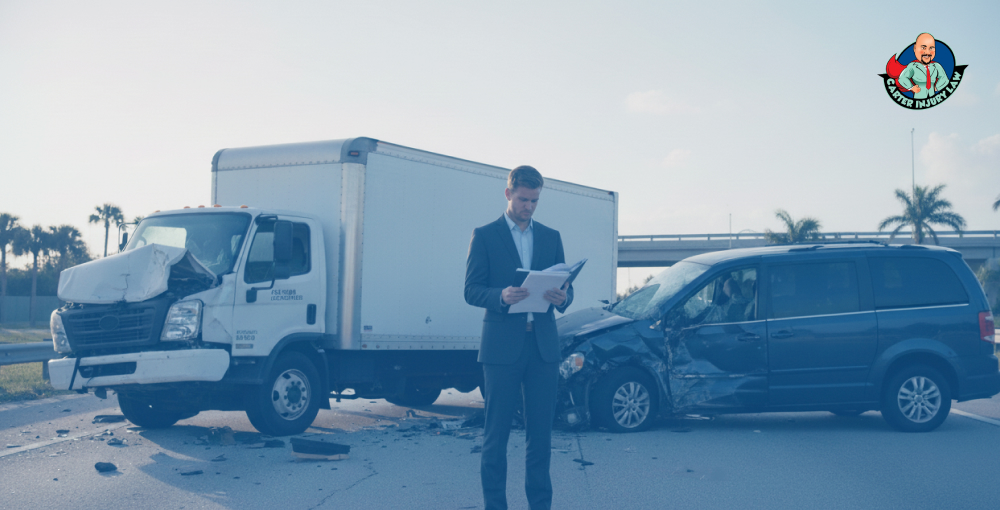
This is the step that often changes everything. I have met many clients who waited too long to reach out, thinking they could handle things on their own. By the time they called, evidence had disappeared, witnesses had moved, and the insurance companies had already shaped the story to fit their version.
Delivery truck accidents are not simple fender benders. There can be multiple parties involved, the driver, the delivery company, and sometimes even a third-party contractor or vehicle manufacturer. Each one has its own insurance policy, its own lawyer, and its own way of avoiding responsibility. My job is to untie that web and make sure the focus stays on you, your injuries, and what you deserve.
When you contact me early, I can start protecting your claim from the first day. That means preserving evidence, collecting surveillance footage before it gets erased, and dealing with insurance companies so you don’t have to. You should be focusing on healing, not arguing over paperwork or calls.
Next, let’s talk about who can actually be held responsible for a delivery truck accident in Florida.
When I take on a delivery truck accident case in Florida, I never stop at the surface. Most people think it is always the driver’s fault, but that is rarely the whole truth. Every crash has layers, and once you start peeling them back, you see how many hands were actually on the wheel that day.
Let’s start with the driver. If they were speeding, distracted, or too tired to be on the road, they carry a share of the blame. But I always look beyond that. Delivery companies are often the bigger problem. They push impossible schedules, skip safety checks, and hire drivers who barely meet the minimum qualifications. In my experience, companies like that create accidents long before the crash happens.
Then there are the contractors and maintenance crews. Some companies lease their trucks to third parties or cut corners on repairs to save money. A bad brake job or worn tire can turn a regular drive into a disaster. If that happens, I make sure those responsible are part of the case too.
Sometimes, the fault goes even higher. Defective parts or faulty designs can make a truck unsafe from the start. In those cases, I bring the manufacturer into the conversation.
Just a few months ago, a crash on Florida’s Turnpike made national news. A delivery truck blocked traffic during an illegal U-turn, and a family in a minivan didn’t stand a chance. It turned out the driver’s commercial license had issues in multiple states, and the company failed to check his record properly. That single mistake cost three lives and opened an investigation into how many others were driving under the same conditions.
That story stays with me. It is a reminder that no accident happens in isolation. It is a chain of bad decisions, ignored warnings, and overlooked responsibilities. My job is to trace that chain and hold every link accountable, no matter how far it goes.
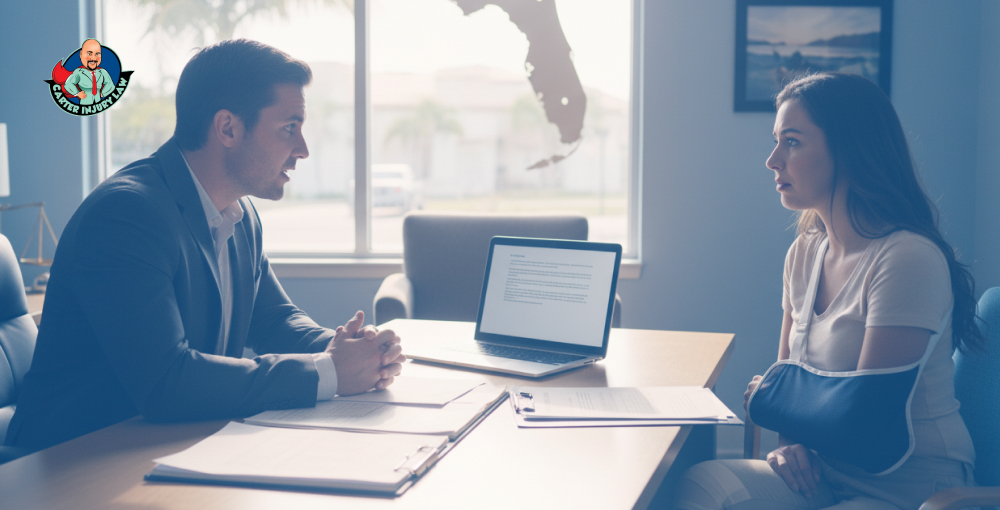
If you are here trying to figure out what comes next after a delivery truck accident in Florida, I want you to take a breath. You are not the only one feeling lost right now. These moments are heavy and unfair, and no one should have to go through them alone. That is why I started Carter Injury Law, to take some of that weight off your shoulders and help you find a way forward that actually feels fair.
When you call me, there is no pressure. There is no fee to start. We work on a contingency basis, which means you do not pay me anything unless we win. I take on the risk so you can focus on healing, on getting your strength back, on putting the pieces of your life where they belong.
You deserve someone who listens and someone who fights for you until the job is done. So reach out. Tell me what happened and what it has cost you.
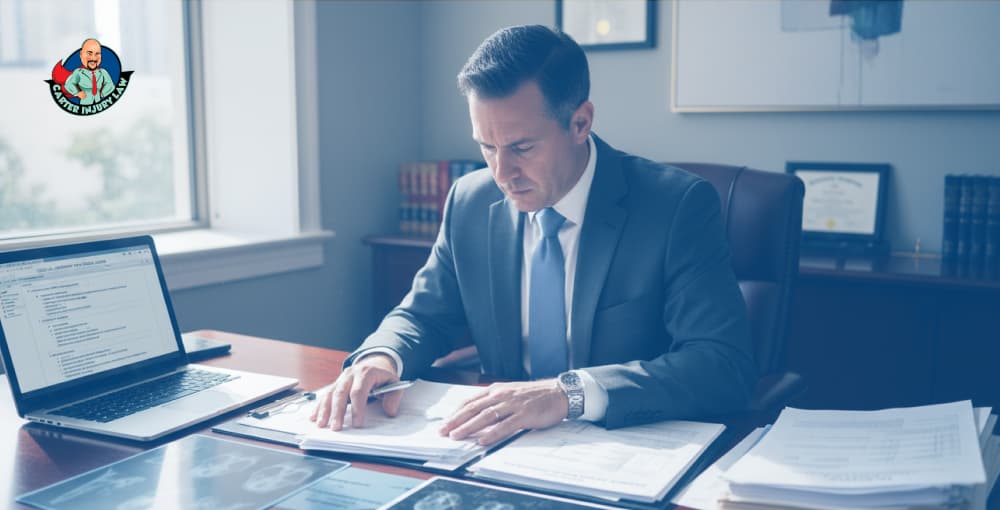
Brain injuries from delivery truck accidents are unlike any other kind of trauma I see as a lawyer. They don’t always come with sirens or broken bones. Sometimes my clients walk away from the crash thinking they’re lucky, only to wake up days later in a haze, forgetting conversations, losing focus, and wondering why everything feels slightly out of sync. I’ve learned over the years that the real damage often hides behind a calm surface. The mind goes quiet before it begins to fall apart.
In my practice at Carter Injury Law, I’ve seen these injuries turn strong, capable people into strangers to themselves. One client told me it felt like living underwater. Every thought slowed, every sound distant. And just when they start to question their own reality, the insurance companies step in, armed with their favorite argument that “there’s no visible proof.”
That’s where I come in because the proof is there, buried in medical scans, hidden in delivery logs, and coded inside the truck’s black box. The question isn’t whether it exists. It’s whether I can uncover it in time.
When I first meet someone with a brain injury from a delivery truck accident, it reminds me of the movie Memento. You know, the one where the main character can’t form new memories and pieces together his life through notes and tattoos. That is what it can feel like to live with a traumatic brain injury. Every day becomes a puzzle, and even simple tasks feel unfamiliar.
In my office, I walk clients through what the injury really does. It is not always pain you can point to. It is confusion, headaches that come and go, dizziness that hits in the middle of the supermarket, and words that disappear before you finish your sentence. Insurance companies often see these injuries and think they are minor because they cannot be measured on a checklist. That is why medical evidence becomes our anchor.
I work with neurologists, neuropsychologists, and life care planners to document every symptom and connect it to the crash. Each MRI, each cognitive test, and each doctor’s note becomes a piece of the story. The story is not just about an accident. It’s also about how someone’s life was rerouted, often in ways that are hard to see but impossible to ignore.

When I take on a brain injury case from a delivery truck accident, the first thing I do is step into the shoes of my client. I need to see the accident not just as a moment, but as the event that changed their daily life.
If you suffered a brain injury from a delivery truck accident, the way to win starts with proof and patience. Medical records, neurological reports, and the truck’s black box data all become part of the story that links the crash to what you live with now
I start by gathering evidence that goes beyond the obvious. In delivery truck accidents, the details are often hidden in layers of corporate records and digital data. Some of the things I look for include:
Truck telematics and black box data can show speed, braking, and the moments leading up to impact. It often tells a story the driver or company would rather keep quiet.
Delivery logs and schedules reveal whether drivers were under pressure to meet unrealistic deadlines. Fatigue and stress are common contributors to accidents.
A poorly maintained truck can be as responsible for the crash as the driver. These documents often uncover patterns of negligence.
Every scan, test, and doctor’s note carries weight. I work side by side with medical specialists to trace each symptom back to the crash and make sure its impact is fully understood.
Neighbors, passengers, and even other drivers can confirm details that companies may try to obscure.
Once I have the evidence, I map it to the client’s life. I detail how the injury has affected their ability to work, their daily routines, and even their relationships. This is what changes a medical report into a narrative a judge or jury can understand.
I also make sure the client knows what to expect. Brain injury cases are not quick or simple. They require patience, repeated testing, and constant communication with medical and legal experts. But when every piece falls into place, the invisible damage becomes visible. The goal is not just to prove the accident happened, but to show exactly how it changed a person’s life and why justice requires accountability.
This process takes time, but it is the only way to hold both the driver and the delivery company responsible for the life-altering impact of a brain injury. It is carefully done, it is herculean, and it is necessary to win cases that too often seem impossible at first glance.
In most delivery truck accidents, the driver is only part of the story. I have seen countless cases where companies push drivers to meet impossible schedules, stacking hours in a way that makes crashes almost inevitable. The law does not excuse negligence just because a company hides behind corporate layers or claims their driver acted alone.
When I take on a case, I dig into company practices. I review training records to see if drivers were properly prepared. I examine rest schedules to determine whether fatigue was a factor. I look for patterns of complaints or prior incidents that show systemic issues. Every memo, email, or internal report can reveal how a company prioritizes speed over safety.
I also talk to experts who can translate these findings into legal arguments. Safety engineers, traffic analysts, and human factors specialists show that the accident was not random but a consequence of preventable choices.
Holding a company accountable goes beyond compensation. It sends a message that corners cannot be cut when lives are at stake. I have seen families gain not just financial recovery, but confidence that someone in the system noticed, understood, and acted to ensure it does not happen to others.
In these cases, the strength of the legal strategy comes from combining evidence, expert testimony, and a clear demonstration of responsibility. The law may seem slow, but when all the pieces come together, it forces accountability where it is due.

After the courtroom strategy is in motion, my focus shifts to what happens every day for my clients. Brain injuries from delivery truck accidents do not follow a neat timeline. Some mornings are clear, some afternoons bring confusion, and nights often carry exhaustion that no sleep can fix.
That’s why I work closely with medical teams to track progress and adjust documentation as symptoms evolve. Sometimes this means updating cognitive assessments or gathering new therapy notes. Other times it is simply being a constant point of contact, explaining what insurance adjusters might misunderstand or clarifying the importance of a new report in the legal file.
I also encourage clients to record the small disruptions that reveal the injury’s impact. Missed meetings, forgotten appointments, or difficulty concentrating on familiar tasks become part of the evidence. These details may seem minor in isolation, but together they demonstrate the real-life consequences of the accident.
Beyond the process, I make sure clients feel supported in reclaiming control over their lives. This could mean connecting them with support groups, rehabilitation programs, or vocational experts who help adapt work and daily routines.
Every step I take with a client in recovery strengthens the case and, more importantly, reinforces that their experience matters. Winning in court is essential, but helping someone regain confidence, stability, and a sense of normalcy is the part of the work that defines the real impact of our legal efforts.

When someone reaches out after a delivery truck accident, the first call is often the hardest. I hear the hesitation, the worry about costs, the uncertainty about whether the injury is serious enough to pursue. At Carter Injury Law, I tell every client this upfront: you do not pay unless we win. Our contingency fee structure means that our goals are fully aligned with yours. We succeed only when you do.
We talk through the accident, the symptoms, and the ways life has changed since that moment. I ask questions to understand the full scope of the injury. These conversations guide the medical evaluations, the evidence collection, and the strategy we will build together.
I also explain what to expect in the coming months. Brain injury cases require patience, coordination with specialists, and meticulous documentation. I make sure clients know that every appointment, every report, and every note contributes to the story we will present in court.
If you or a loved one has suffered a brain injury from a delivery truck accident, the moment to act is now. Call Carter Injury Law today. We will support you through legal issues, all without any upfront fees until your case is won.
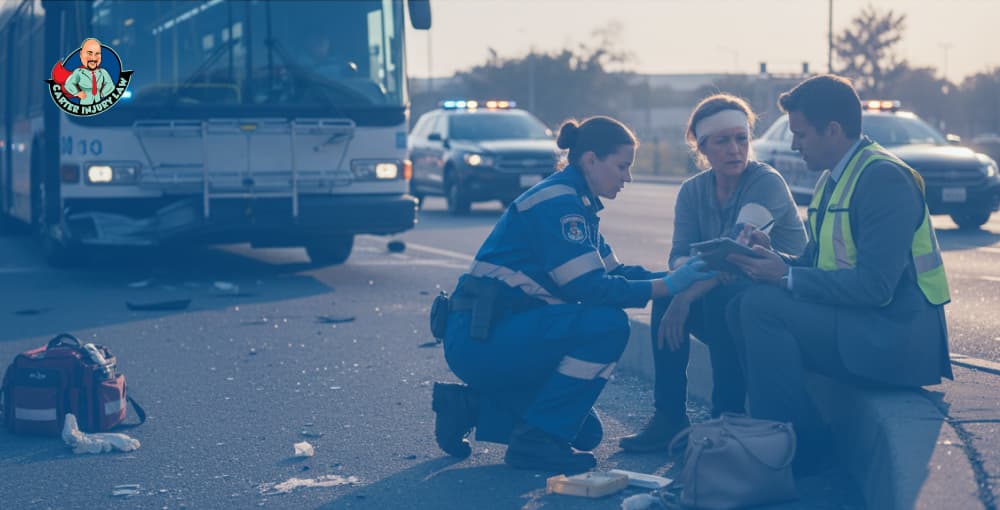
Common injuries in Florida bus accidents include neck and back pain, concussions, broken bones, and internal trauma from sudden impact. Passengers often suffer these injuries because most buses lack seatbelts. I have seen it too many times in my years as a lawyer. People step off those buses confused, shaken, and unsure of what hurts most, because shock always hides the truth at first.
When clients sit across from me, they often tell the same story, that they thought their pain would pass, that they went home instead of going to the hospital. Weeks later, they are fighting headaches, back pain, or worse, medical bills that seem to grow on their own. I listen carefully, because every bruise and every record tells part of a story that deserves to be heard.
I have learned that what you do in those first few hours after a bus accident decides what kind of help you can get later. And that truth, the one that separates a fair claim from a failed one, begins where most people least expect it.
When people think of bus accidents, they picture chaos, but the real story begins after the noise fades. I have sat with clients who felt fine at the scene, only to wake up the next morning unable to move their neck or lift their arm. The human body has a strange way of protecting itself in crisis. Adrenaline covers pain, and by the time it wears off, the damage has already set in.
Neck and back injuries are the ones I see the most. They come from sudden stops, sharp turns, and impact that throws the spine out of alignment. Some clients describe it as a tightness, others say it feels like a dull fire burning through their shoulders. Then there are the head injuries, the concussions that hide in plain sight. I have seen people go days before realizing that their headaches, dizziness, or confusion were signs of something deeper.
Broken bones and internal injuries often follow the same pattern. A bruise might look small, but beneath it can be a fractured rib or a damaged organ. I once represented a man who thought he had only been shaken up. A few hours later, he was in surgery for internal bleeding. That is why I tell every client to never guess at the severity of an injury. Let the doctors decide, not the mirror.
Bus accidents don’t just break bones, they also break routines. They take away sleep, work, and the small certainties of daily life. Each injury is a piece of someone’s story, and how that story is documented decides whether it will be believed.
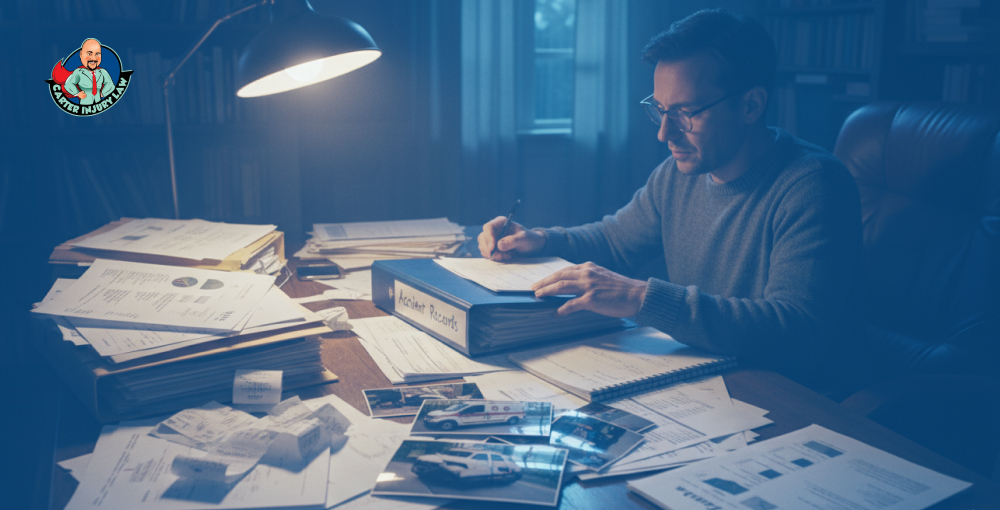
Memory is slippery after an accident. Shock bends time, details blur, and what feels clear in the moment fades within hours. That is why I tell the people who come to me at Carter Injury Law to start documenting right away, while the world is still raw and real.
The first step is always medical attention. Even if you believe you can walk it off, see a doctor. The report they write is more than a formality, it becomes the proof that ties your pain to the accident. I have watched too many people wait, hoping to heal on their own, only to learn later that the delay cost them more than comfort. In Florida, early medical records are the backbone of a strong case.
Photographs and videos come next. Capture everything, the scene, the bus, your injuries. Those images hold what memory cannot. They speak when words become uncertain. I have seen how a single photo can turn a quiet claim into undeniable truth.
Then comes the paperwork that feels tedious but carries weight. Get a copy of the official accident report from the police or the Florida Highway Patrol. Keep a notebook beside your bed and write down what hurts each day, how you slept, and what you could not do. Over time, that notebook becomes a map of recovery that no one can dispute.
Keep every bill, every receipt, and every scrap of evidence that shows how your life shifted. The small details are important because they form the full picture of what was lost.
I tell the people I represent that documentation is an act of self-defense. It preserves their truth against the noise of insurance forms and courtroom arguments. It is the difference between being heard and being dismissed.
Every case I take on starts with a story, but stories alone rarely win. What wins is what can be proven, what can be seen, signed, or measured. In Florida, the law rewards evidence. That is why I tell the people I represent that their paperwork is their armor.
When I walk into a negotiation or a courtroom, I rely on the records that began the moment they left the crash site. A medical report that shows the timing of an injury. Photos that show swelling before it faded. Notes written on nights when pain made sleep impossible. Each detail becomes part of a pattern that cannot be argued away.
Insurance companies look for cracks in the timeline. They will say the pain came later, that something else caused it, and the injury is not worth what it costs. However, with careful documentation, those arguments fall apart. Evidence turns silence into clarity, and clarity leaves little room for denial.
I have learned that people who take control early recover stronger, not just in body but in confidence. They see the process for what it is, a slow rebuild of truth piece by piece. By the time we reach the courtroom, their case already speaks for itself.

Every so often, I come across a story that reminds me why this work still matters. Not long ago, Miami-Dade County announced something that felt like a small step in the right direction. Starting October 27, the county is launching its first Bus Rapid Transit line, a twenty-mile route with safer stations, cleaner boarding areas, and technology that makes travel smoother and more predictable.
It may sound like another piece of transit news, but for those of us who see what happens when systems fail, this kind of improvement means fewer accidents, fewer injuries, and more convenience for families who depend on the bus every day.
Another story that stayed with me came earlier this year when Miami-Dade began cracking down on drivers who ignore stopped school buses. They installed cameras on a thousand buses and caught over eleven thousand violations in just two weeks. Those numbers are heavy, but they also show something powerful, that awareness is growing, that the state is starting to protect riders and children before tragedy strikes.
These changes will not erase the pain of those who have already been hurt, but they prove that progress is possible. Every new route, every safety upgrade, and every law enforced properly brings us closer to a safer Florida. I hold onto that when I sit across from someone whose life has been turned upside down.

When someone walks into my office after a bus accident, they rarely want to talk about law. They want their life back. I never forget that. My work begins long before we file a claim. It starts with listening, with piecing together the fragments of what happened, and with helping them see that they still have control.
I spend time explaining what comes next because the process can feel like another accident unfolding in slow motion. There are forms, deadlines, and questions that never seem to stop. My job is to take that weight off their shoulders. I build the case, line by line, document by document, so they can focus on rebuilding.
Every injury tells its own truth. Some are visible, others live quietly under the surface. I have seen how patience, honesty, and proper evidence can turn pain into something that moves the system toward fairness. That is why I do this work.
When people come to me after a bus accident in Florida, I want them to understand their rights and know that someone is willing to fight for them until the last detail is seen and valued. If you or someone you care about has been injured in a bus accident in Florida, reach out to Carter Injury Law. Let me handle the proof and the paperwork while you focus on getting better. Together, we can make sure your story is not lost in the noise.
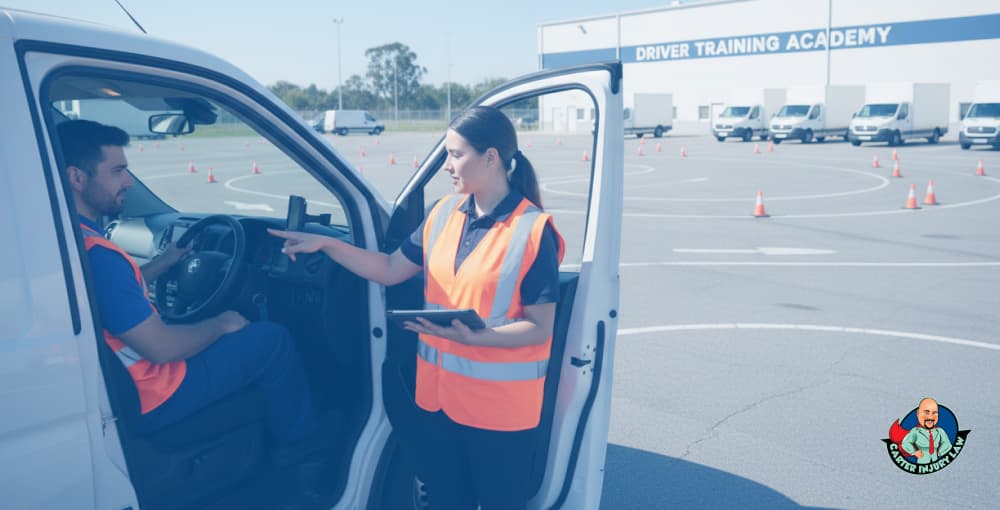
Delivery driver training in Florida is the thin line between safety and disaster. Every day, thousands of delivery vans rush across our highways and neighborhoods, carrying everything from takeout to furniture, all on tight deadlines. I’ve seen what happens when a driver isn’t prepared for a sudden storm, a distracted pedestrian, or the sharp turn that comes out of nowhere. Training, or the lack of it, can decide whether everyone makes it home safely that night.
When I review these cases, it’s rarely about bad luck. It’s about a system that prizes speed over safety and convenience over caution. And when that system fails, someone pays the price. Sometimes it’s a family whose life changes in a single heartbeat. Sometimes, it’s the company that thought a quick orientation was good enough.
What happens next depends on what the law decides, and the law in Florida has a long memory for negligence.
I’ve sat across from drivers who meant well but never learned how to handle a fully loaded van on wet Florida asphalt. They tell me they thought common sense was enough. It never is. Proper delivery driver training is surviving the everyday chaos that comes with Florida’s roads. Between sudden rain, impatient traffic, and endless delivery routes, a driver without real preparation is like a sailor without a compass.
Good training builds instincts, not habits. It teaches drivers how to see trouble before it happens, how to manage fatigue, and how to react when someone cuts them off in a downpour. I’ve seen the difference in accident reports. Trained drivers avoid collisions that untrained ones never saw coming. When training is done right, it protects everyone on the road, not just the driver behind the wheel.
However, what happens when training is ignored or rushed, when companies skip the essentials just to fill a schedule? That’s where the real damage begins, and that’s where the law starts paying attention.
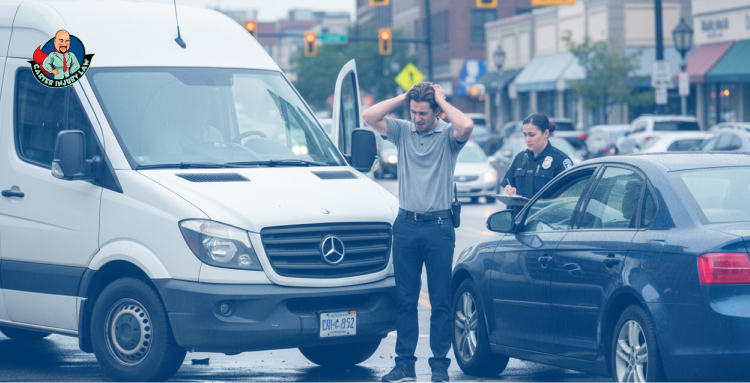
When I take on a delivery accident case, one of the first things I look for is whether the driver was properly trained. Most people assume a uniform and a delivery van mean experience, but that’s not always true. Some companies push drivers onto the road after a quick tutorial and a stack of deliveries, hoping nothing goes wrong. When it does, the legal fallout can be serious.
If poor or incomplete training caused the crash, Florida law allows injured victims to hold the right people accountable. Here’s how it usually plays out:
Negligence at the wheel. The driver’s lack of preparation can count as a breach of duty. If they didn’t know how to handle sudden braking, turns, or hazardous weather, that matters.
Employer responsibility. Under respondeat superior, the company is liable for what its employees do on the job. If the driver was delivering when the crash happened, the employer often shares the blame.
Negligent hiring or supervision. When a company ignores background checks or skips training to save time, that decision can become evidence of negligence in court.
Insurance complications. Commercial insurance usually covers delivery accidents; however, if training protocols were ignored, it can lead to drawn-out investigations and higher payouts.
I’ve seen these cases turn not on what happened in the moment, but on what didn’t happen weeks earlier in a training room. The truth always comes out in the paperwork, the policies, and the choices that led up to that crash. And when it does, the next step is understanding how Florida law decides who pays for what comes after.

After an accident, confusion sets in fast. Medical bills start arriving before the police report is even finished, and companies often move quicker than victims do. I’ve seen it time and again, someone calls me thinking they have no case because the driver seemed apologetic or the company promised to “handle it.” What they don’t realize is that Florida law gives victims real power, even when the other side wants to downplay it.
If a delivery driver’s lack of training caused the crash, you have the right to seek compensation for every loss tied to that negligence. That includes medical expenses, lost wages, and pain that lasts long after the wreck is cleared. Florida follows a comparative negligence system, which means even if you were partly at fault, you may still recover damages.
Insurance companies often try to twist this rule, using it to offer less than what’s fair. I don’t let that happen. My job is to make sure every missed step, the skipped training, the ignored safety policies, and the reckless scheduling come to light.
The law may seem complicated, but its purpose is to restore balance after carelessness. And the next step is proving who failed that duty.

When a delivery driver accident happens, life rarely returns to normal quickly. The shock fades, but the aftermath stays. Medical appointments, insurance calls, and the silent frustration of knowing how easily it could have been avoided. I meet clients in those moments when they feel trapped between trauma and papers. My role is to pull the truth out from the noise.
Every case begins with an investigation, not just of what happened on the road, but of what happened before it. I look at training records, company policies, delivery schedules, and even text messages between managers and drivers.
It’s in those details that the real story often hides. Many times, we discover that the company ignored red flags, pushed drivers past safe limits, or skipped critical training altogether. Those choices are serious because the law doesn’t excuse neglect that endangers the public.
I also make sure clients understand what their case is truly worth. Insurance companies like to settle fast, especially when they know training failures could expose the company to greater liability. I walk my clients through every number, every offer, and every clause buried in fine print. When you’ve been hurt, you deserve honesty, not pressure.
We also work on a contingency basis, so you don't have to pay anything if we fail to win. That approach keeps the focus on recovery and justice, not on bills piling up while the case moves forward. I’ve seen people regain not just financial stability but confidence, the sense that someone finally stood up for them when everything else felt uncertain.
And when the truth finally rises to the surface, when the company’s neglect and the chain of failures are no longer hidden, something inside you steadies. In that stillness comes a question that cannot be ignored, what will you do now that you can see everything for what it is?
When I ask someone to reach out, it’s not only routine but also the beginning of understanding how their story threads itself through the law. Every crash unfolds differently, a sequence of choices and chances, of what went wrong and who should have stopped it. The smallest detail can carry the weight of truth, and I listen closely, because truth hides in quiet corners.
If you or someone you love was hurt in a delivery accident, you should know that you are not helpless. Companies and insurance companies may seem untouchable, but Florida law gives you the right to demand answers, to trace the cause of what happened, and to name it for what it is. My work is to make sure those answers are found and made clear.
When we meet, we move carefully through the next steps. We look at the evidence, the responsibilities, and the ways compensation can help you steady your life again. The process stays clear and private, shaped around your needs, not theirs.
I have spent years walking beside families in Florida through moments like this, where loss and confusion meet the long road to recovery. The first call often changes everything. Contact Carter Injury Law, and together we will uncover what went wrong and what can still be made right.
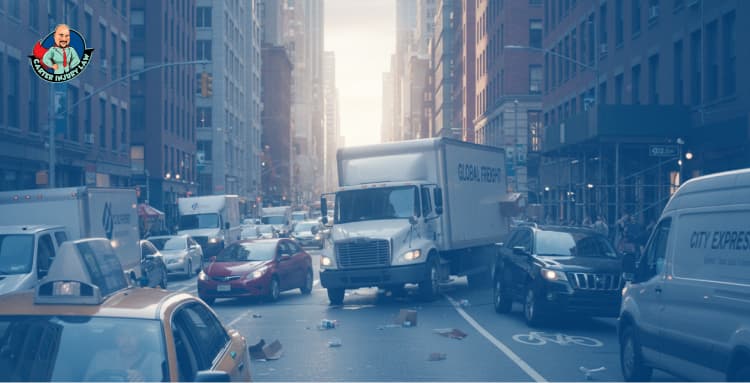
Delivery trucks cause more accidents than most people notice in Florida. Every week at work, I witness the chaos left behind by a crash, the confusion that comes next, and the families attempting to make sense of what hit them. These trucks move fast through busy streets, often with drivers under pressure to meet impossible delivery times. One wrong turn or one missed glance can turn a routine day into a disaster.
What many do not see is how often these accidents happen and how they unfold in ways that leave victims feeling numb. I have watched it happen too many times, and what I discovered about why these crashes keep happening still unsettles me.
I have spent years studying how delivery truck accidents really happen in Florida, and it is rarely as simple as a careless driver. The truth is, most of these crashes begin long before the moment of impact. They start in warehouses and loading docks where schedules are tight and pressure runs high.
Drivers are often pushed to cover long routes in a short time, sometimes skipping breaks or cutting corners to stay on track. That pressure shows up on the road. Fatigue dulls reaction times, impatience grows, and judgment slips.
Then there are the conditions unique to Florida itself. The heat wears on both vehicles and people. Afternoon storms roll in without warning, making roads slick and visibility poor. Tourists fill the highways, and traffic in cities like Orlando or Tampa never seems to stop.
A delivery truck, heavy and slow to maneuver, becomes a hazard in that kind of chaos. I have seen drivers try to brake too late on wet pavement or swerve to avoid another car, and the result is always damage, injury, and confusion.
Companies often bear a share of the blame, but they do not make it easy to prove. They have teams of lawyers and insurance adjusters ready to protect their bottom line. That is where my work begins. I look at logbooks, delivery schedules, and maintenance records to find out if someone pushed that driver too far or ignored signs that the vehicle was unsafe. Sometimes the evidence shows a pattern, a company cutting safety corners again and again until someone gets hurt.
Every case has its own story, but they all carry the same lesson. Behind each crash is a chain of small decisions that could have been made differently. And the people who suffer most are rarely the ones who caused it.

When someone comes to me after a delivery truck accident, the first thing I do is listen. People often arrive shaken, unsure of what to do next, and buried under paper from insurance companies. I tell them to take a breath. What happened to them is something that deserves careful attention. Every detail, from the time of day to the angle of the skid marks on the road. These details tell the real story of how and why the crash happened.
I start by gathering everything that can help build that story. Police reports, photos from the scene, black box data from the truck, maintenance logs, and driver schedules. These pieces often reveal patterns that point to negligence. Maybe the driver had been behind the wheel for twelve hours straight. Maybe the company delayed routine maintenance to keep the truck running. I have seen engines fail because no one checked the oil, and brakes give out because someone skipped an inspection to save time. These things are not coincidences.
Florida law allows victims to seek compensation for what they have lost, but it is not just about money. It’s more about accountability. When a company puts profit ahead of safety, or when a driver is forced to choose between keeping a job and following the rules, someone has to step in and make it right. That is where I come in. I walk my clients through the legal process, explaining each step so they are never left wondering what comes next.
The law can be complex, but justice does not have to be confusing. My goal is to make sure my clients feel seen, heard, and protected while I handle the fight on their behalf. Because behind every case file is a person trying to rebuild their life, and that is what keeps me doing this work.
Over time, I have learned that knowing what to do right after a delivery truck accident can make a huge difference in the outcome of a case. The hours and days after the crash are often a blur, but they are also when the strongest evidence is found. I always tell my clients to act quickly and stay calm. The right steps taken early can protect both their health and their rights.
Here is what I guide them to do:
Get medical help right away. Even if injuries seem minor, hidden trauma can surface later. A medical record helps connect your injuries directly to the crash.
Call the police and make sure a report is filed. That report becomes an official record, and it can be crucial when determining liability.
Take photos and gather contact information. The condition of the vehicles, the road, and any witnesses all paint a clearer picture.
Do not discuss fault at the scene. Let the evidence speak. Even a simple apology can be misinterpreted by insurers as an admission of guilt.
Avoid signing or agreeing to anything from the delivery company or their insurer. They are trained to minimize payouts, and once a release is signed, it can be difficult to undo.
When clients come to me, I take all that information and start building their case piece by piece. I contact experts to analyze the truck’s data, investigate the company’s safety practices, and calculate the full scope of losses. That includes medical bills, lost wages, and the pain that never makes it into a spreadsheet but still defines someone’s recovery.
I work on a contingency fee basis, which means my clients do not pay unless we win. I want them focused on healing, not worrying about hourly fees or hidden costs. Every case becomes a partnership built on trust. My clients handle their recovery, and I handle the rest.
The mission is to make sure those responsible are held accountable and to give my clients a real chance to rebuild their lives with dignity.

This year alone, Florida has seen more delivery truck crashes, and each one tells a story that never makes it to the headlines. I keep track of these incidents because they shape how I fight for my clients. Behind every case number is a person who did not expect their day to end in a collision with a truck that should have been driven, maintained, or managed with more care.
In August 2025, a semi trailer attempted an illegal turn on the Florida Turnpike near mile marker 170. The driver blocked several northbound lanes, and a minivan traveling behind had no chance to stop in time. The impact was devastating. Three passengers in the minivan died at the scene, while the truck driver walked away unharmed.
A few months earlier, in March 2025, tragedy struck again in Citrus County. A dump truck crossed into oncoming traffic on West Homosassa Trail and collided with a minivan carrying a local teacher named Crystal Jackson and her three children. I read that report and felt the same frustration I always do, knowing that a simple failure to yield had destroyed a family.
Then there was the ripple effect of these incidents on state policy. After the Turnpike crash, Florida officials began tightening oversight on trucking operations. The New York Post reported that weigh stations were being converted into checkpoints for stricter enforcement. It is a step in the right direction, but I keep thinking of the families who lost everything before those changes took shape. Legal accountability should never depend on tragedy to get attention.
These reports serve as a reminder to me that delivery truck accidents in Florida are not slowing. Each one reveals how fragile safety becomes when speed, fatigue, and pressure meet on the same road. And until accountability becomes a priority at every level, families will keep paying the price for someone else’s negligence.

In every case, I see how these accidents run through a person’s life long after the crash is over. A delivery truck collision is rarely just a moment on the road. It can change how someone works, sleeps, and even how they see the world. Families take on the weight of medical bills, missed paychecks, and long months of recovery. Some clients tell me the hardest part is not the pain itself but the feeling that they have to fight alone against large companies that seem untouchable.
That is why I make it my job to level that playing field. When I take on a case, I bring in investigators, accident reconstruction specialists, and medical experts to back every claim with solid evidence. I negotiate directly with insurance companies so my clients do not have to repeat their trauma to people who see them as numbers.
And when the other side refuses to take responsibility, I take the fight to court. I have seen juries respond when the truth is laid out clearly and the human cost is impossible to ignore.
Florida roads will always be busy, and delivery trucks are not going anywhere. But holding companies accountable can make the roads safer for everyone. If you or someone you love has been hurt in a delivery truck accident, I want you to know you have options.
My name is David Carter, and at Carter Injury Law, we fight for those who have been left behind in the rush of someone else’s schedule. You can reach out anytime, and remember, you do not pay unless we win your case.
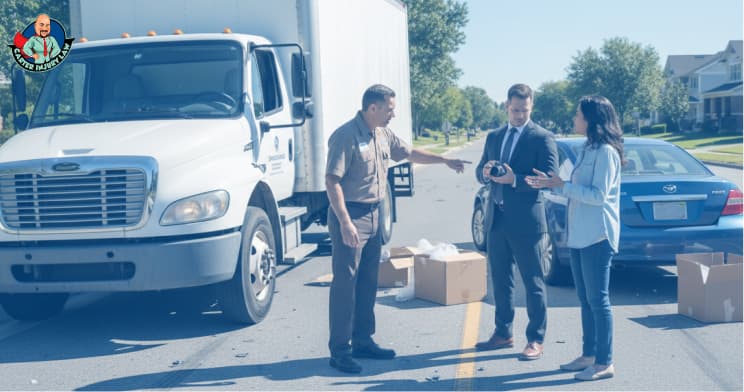
When a delivery truck accident happens, the chaos doesn’t stop once the tow trucks leave. What follows is a second collision, this time with the insurance system. I’ve seen people walk into that system thinking it’s built to help them, only to find out that every friendly phone call, every quick form, and every “we’re just checking in” email hides a strategy designed to save the insurer money, not lives.
I’ve been an injury lawyer long enough to spot the patterns. The same mistakes appear again and again, and by the time most people find me, they’ve already signed or said something that cuts into the compensation they deserve. It’s not their fault, really. The process is built to confuse you. However, once you understand where those traps are, you start to see how the whole game is played.
The first call after a crash often feels like relief. A calm voice on the other end saying they’ll “handle everything” sounds like someone finally showing up to help. I’ve watched clients cling to that voice the way a shipwrecked sailor clings to driftwood. The problem is that voice doesn’t work for you; it works for the insurance company.
Insurance adjusters are trained to sound like your friend while collecting details they can later use to shrink your claim. I’ve seen it too many times. Someone tells the adjuster they’re “doing okay” out of politeness, and weeks later that line becomes proof that their injuries weren’t serious. It’s like walking into a poker game without realizing everyone else already knows your cards.
Think about it like the movie The Matrix. When you’re plugged in, you think the world around you is real, that you’re in control. Then you start to see the code running behind it all, the small print, the polite questions, the strategically timed calls. Once you see it, you can’t unsee it. That’s where I come in. My job is to pull people out of the illusion before the system rewrites their story.
If you remember nothing else, remember to not talk to the insurance company before you understand the rules of the game. Because in this one, silence can protect you more than words.
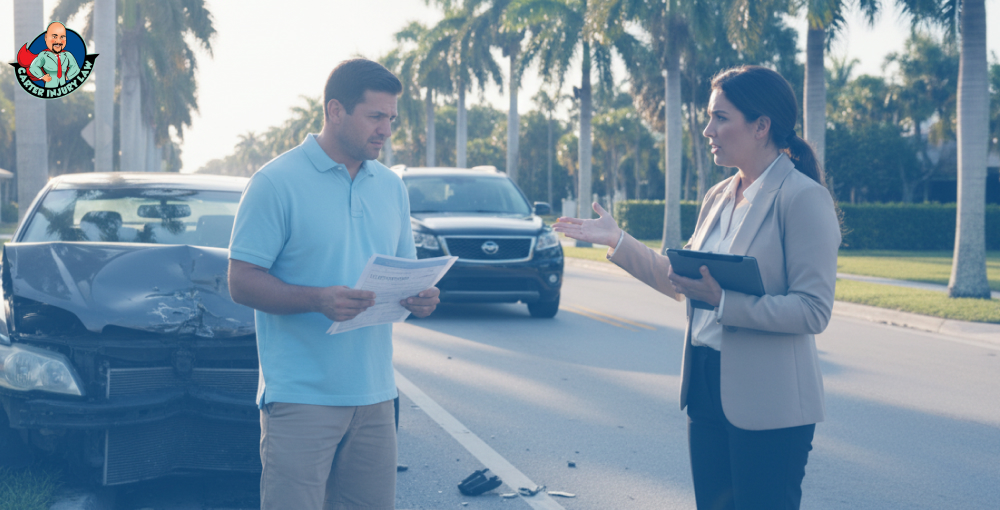
Florida’s no-fault insurance sounds like a lifeline, but in practice, it’s more like a patchwork quilt full of loose threads. Personal Injury Protection, or PIP, is supposed to cover your medical bills after an accident no matter who caused it. What people don’t realize is how quickly that protection collapses when you don’t play by the system’s hidden rules.
I’ve had clients come in shocked to learn their medical bills aren’t being paid because they waited too long to see a doctor. Under Florida law, you have 14 days to get medical care after a crash, or your PIP coverage can shrink to almost nothing. Fourteen days sounds like plenty, until the pain creeps in on day fifteen. Then it’s gone, and so is your coverage.
PIP also caps what it pays. Ten thousand dollars might sound like a lot, but if you’ve ever spent a night in a hospital, you know how fast that number disappears. The rest comes out of your pocket unless you step outside the no-fault system and hold the at-fault party accountable.
People think no-fault means no fight, but it’s usually the opposite. The fight just moves behind the curtain, buried in fine print and deadlines. It’s like realizing your seatbelt works only if you buckle it the exact right way at the exact right moment. The law gives you that window, but it doesn’t forgive you for missing it.
Right after a crash, the first offer always comes dressed as mercy. The adjuster talks about how they want to help you move forward and how they understand what you’re going through. They offer a check that looks like a life raft in a storm of bills, repairs, and missed work. I get it. I’ve watched people reach for it, thinking it's a rescue. However, it’s not a rescue; it's a strategy.
Early settlements are built on panic. Insurance companies know you’re scared, tired, and just want normal life back. That’s when they move in. The problem is, those first numbers never include the surgeries, the therapy, and the weeks you’ll lose trying to get your body and your job back on track. Once you sign, there’s no reopening the file, no “I didn’t know.”
I once handled a case where a client had accepted a quick settlement before coming to me. A few months later, her back injury worsened, and the treatment cost more than the check she’d already cashed. The insurance company didn’t break any laws. They simply counted on her not knowing what her future would cost.
It reminds me of those old video games where you pick the treasure chest that shines the brightest, only to find it’s empty inside. The real value takes patience, and patience is the one thing insurance companies hope you’ll run out of first.
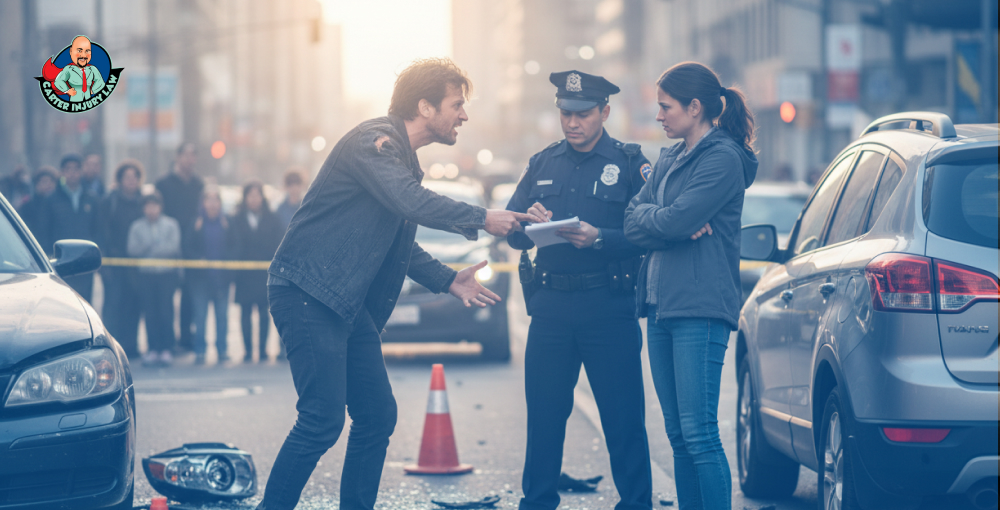
Here’s where things start to twist. Florida’s comparative fault rule sounds simple, you can still recover damages even if you share some blame for the accident. However, simplicity is a mask. The moment the insurance company can convince a jury that you were more than 50% responsible, your right to compensation disappears entirely. Gone, like it never existed.
What most people don’t see is how subtly fault gets shifted. It rarely comes as an accusation. It sneaks up on us, hidden in questions that sound harmless:
“Were you sure you saw the truck before changing lanes?”
“Could you have slowed down sooner?”
“Was the light yellow or red when you entered the intersection?”
Each question is a thread tugging at your case. One small admission and the story changes. You become the careless driver instead of the injured victim. I’ve sat in depositions where a single word tilted the whole balance of a claim.
Comparative fault is mainly about persuasion. The insurance lawyers will frame the scene like a movie where you’re the unreliable narrator. My job is to pull the camera back to show the weight of the truck, the driver’s schedule, and the company policies that put speed over safety.
If you’ve ever watched a courtroom scene in a film and thought, “That twist came out of nowhere,” you already understand how fault works in these cases. It’s not about what happened, it’s about how convincingly someone else can rewrite it.
Most people picture one insurance company handling everything after a crash. With delivery trucks, it’s never that simple. You’re not facing only one insurer, you’re walking into a maze full of them, each guarding its own piece of the payout. There’s the policy for the driver, one for the trucking company, another for the cargo, and sometimes a separate one for the trailer. Everyone points fingers while you sit waiting for answers.
I’ve seen cases where weeks were wasted just figuring out which company was actually responsible for paying the bills. Meanwhile, medical costs pile up and time ticks away. Each insurance company has its own adjusters, its own lawyers, and its own policies that are written to protect itself first. You can’t assume that because one carrier accepts fault, the others will follow.
It’s a bit like dealing with the big movie studios. Each one owns a piece of the rights, and no film gets made until everyone agrees. The difference is, in this story, you’re getting bills instead of popcorn.
When I take on a case like this, my first move isn’t dramatic. It’s detective work. Finding every policy, reading every exclusion, tracing every layer of coverage. Because until you know who’s holding the money, you’re arguing in the dark. And that’s exactly how the system likes it.

By the time most people come to me, they’ve already tried to handle the insurance battle on their own. They’ve filled out forms, waited for calls, maybe even trusted promises that someone was “reviewing” their claim. What they didn’t realize is that the clock never stops ticking.
In Florida, you only have 2 years from the date of the crash to file a personal injury lawsuit. Two years sounds generous, until you’re six months in, buried under paperwork, still waiting for a fair offer that never comes.
What I tell every client is that we work on a contingency fee basis. That means you don’t pay anything unless we win. No retainers, no hourly bills showing up in your mailbox while you’re trying to heal.
And make no mistake, it is a fight. Insurance companies bet on exhaustion. They know how to drain time and how to stretch patience until people settle for less. My job is to make sure you don’t have to.
I can’t promise the process will be easy, but I can promise that you’ll never have to wonder whose side I’m on. I’ve seen how quickly a delivery truck crash can turn someone’s life upside down, and I’ve seen what happens when they finally get a fair shot at justice. That moment is what keeps me doing this work.
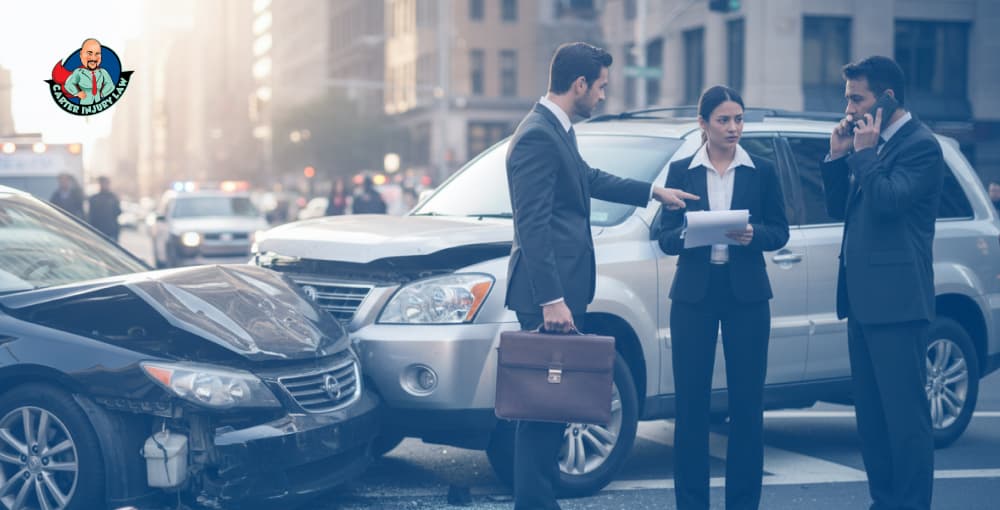
Do you need a lawyer after a car accident? From where I stand, I say not everyone does, but far more people than you might think do. A single recorded statement, a missed filing date, an overlooked lien, any one of those small things can collapse a claim long before anyone argues the bigger truths.
The next phone call you take, the next checkbox you check, and the next form you sign will decide whether the system remembers you as a person who needs care or as a file that got closed for a number on a spreadsheet. What happens after that call is the rest of the story, and it is not always what it looks like on the surface.
I tell clients early, plainly, that Florida’s system looks like a lifeline until you pull at the weave and find out whose hands made it. On paper the state requires Personal Injury Protection, the PIP everyone quotes as the quick fix for medical bills, it even sounds comforting, 24 syllables that promise help.
In practice PIP often means $10,000 in immediate medical and disability benefits and then a series of exclusions, denials, and billing fights that most people never signed up to go through. The statutes still put that first layer between the injured and the courts, so many claims never reach a jury because the coverages and the rules stop them cold.
When you are told you can sue only for a “serious” injury, that is not lawyerly hyperbole but a statutory gate. Florida defines serious bodily injury in narrow, surgical terms, significant and permanent loss of an important bodily function, permanent injury within a reasonable medical probability, significant and permanent scarring or disfigurement, or death.
What that does, in real life, is force a binary conversation about our suffering, where judges and adjusters parse permanence with the same tools they use to parse bills. For someone with injuries that flare and recede, the law writes them out of the part of the story that pays for pain and life disruption
And yes, there are political tectonics under this ground. Lawmakers have tried to untangle or rewrite the no-fault framework, most notably with a 2025 bill that would have repealed the PIP mandate and shifted minimum liability limits, a proposal that made noise but did not become settled law.
The proposal advanced through parts of the House last session, but it stalled before it became the new rulebook for how Floridians recover after crashes. For now the old architecture stays in place, even as the conversation about replacing it continues to grow.

In Florida, your PIP coverage is supposed to be the quick first line of care. An ambulance ride, an ER visit, and the first week of physical therapy can chew through that protection, leaving you in the awkward position of having medical needs and no clear way to make full recovery payments.
Adjusters ask for recorded statements early, sometimes the same day, and they do so for a reason. You are not required under Florida law to give a recorded interview to the other driver’s insurer, and even with your own carrier you can insist on time to get counsel before recounting the crash. Those few sentences you give, off the cuff and still raw, are often replayed, clipped, and used to argue you were not as hurt as you later say you were.
If words do not do the job, images and timing often will. Insurance companies routinely hire investigators to film and photograph claimants, looking for moments that can be taken out of context. A single clip of someone lifting a bag or walking a short distance can be framed as evidence that serious injury is not present, even when the same person limps at home and needs medication.
Cars that look fine at the curb may hide value loss that never appears on an adjuster’s estimate. Florida recognizes diminished value claims, so a car that has been repaired can still be worth less, and that loss is real when someone tries to sell or trade their vehicle. Yet diminished value often requires appraisal, valuation reports, or expert testimony to persuade a carrier to pay, and most people do not know to ask for that until it is too late.
Under the statute now in force, the calendar itself can cut a claim off. For crashes occurring on or after March 24, 2023, Floridians generally have just 2 years from the date of injury to file a negligence suit. That is two years counting from the day the car hit you, not from the day the pain became unbearable or the day you finally saw a specialist. Miss that window and the courthouse door is closed, regardless of how clearly the facts line up.
When I tell someone that hiring a lawyer changes the shape of their claim, I do not mean theatrics or courtroom drama, I mean ingredients and timing. A case is a recipe made of facts, experts, and papers, and the moment you add the right experts, the whole dish tastes different. I call accident reconstructionists to map velocities and points of impact.
I also work with electronic data recovery specialists to pull the event data recorder from a modern car, and I consult vocational specialists when a client will not be able to return to the job they had. Those pieces stop insurance companies from making the argument that your injuries are speculative or unrelated.
Fault, in Florida now, is a number that decides whether you get anything at all, and if you do, how much. The state’s comparative fault rules mean that if a fact finder puts more than 50% of the blame on you, recovery is barred altogether, and if you are 50% or less at fault, your recovery will be reduced by your percentage of blame.
That legal math is why I build a case that narrows the fault fight to disputed technicalities, not to the fog of memory. We collect witness statements, traffic camera clips, expert reports, and cell phone records so that the question of blame becomes a careful tally, not a he said she said.
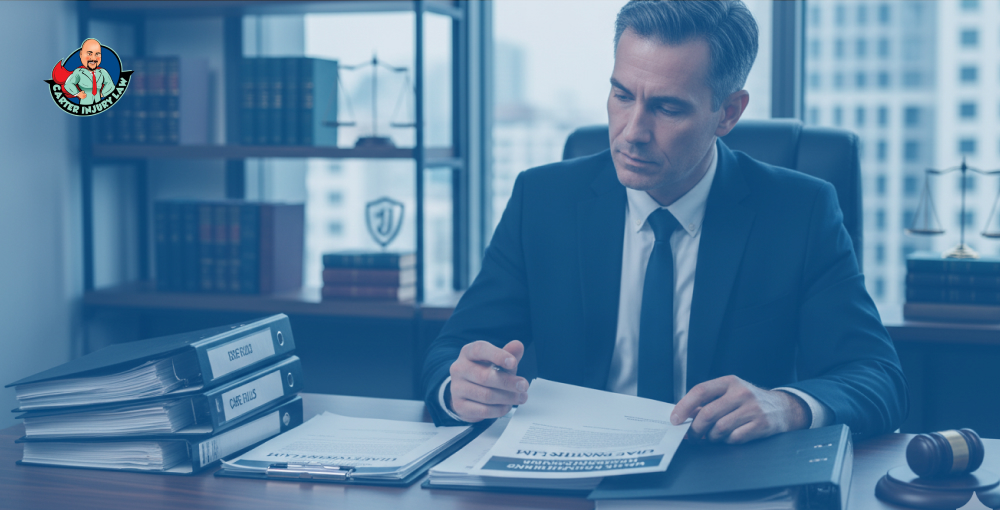
There are practical battles that never make the headlines but determine how much money a person actually walks away with. Uninsured and underinsured motorist coverage is offered and can be rejected in writing, which means many motorists discover their protective options only after they need them, and providers and government agencies can assert liens against recoveries that are sometimes higher than the client expects.
I spend a lot of time identifying every potential lien and subrogation claim, sending the notices the law requires, and negotiating reductions so the settlement actually leaves something for the injured person. Those negotiations are technical, statutory, and often county-specific, so having counsel who knows where to look saves clients from painful surprises.
Finally, the litigation process itself is a tool, not a threat. Filing suit opens discovery, which means depositions, document requests, and sworn answers, and those processes pull loose anything the other side hoped to hide. An insurer that lowballed in the early months will sometimes change its tune when faced with expert reports and a discovery schedule that moves toward trial readiness.
I have settled many cases on the courthouse steps, after the file became so clear and costly to defend that the defense had no appetite for a jury. Knowing when to push to sue and when to settle takes judgment, and that judgment is what legal representation buys you more than anything else.

I tell people frankly how we work. We take these cases on contingency, which means you pay nothing up front, and you do not owe us unless we recover for you. That arrangement aligns our work with yours, it forces me to move quickly and prudently, and it keeps the decision about hiring counsel from being another burden on someone who already has too many burdens. I also explain fees and likely costs at the first meeting so there are no surprises when the final accounting comes.
Florida’s system will never be as simple as the brochures make it sound, and that is the honest critique I carry into every conference room and deposition. If you are tired of legalese, here is the plain part I say to clients before anything else, with no flourish and no spin. I will take the complicated pieces off your plate, I will make sure deadlines are met and notices are sent, and I will fight to keep every dollar that should be yours in your pocket, instead of paying unseen liens and surprises.
That is how a lawyer changes the practical outcome of a claim in Florida, quietly and stubbornly, long before anyone mentions a courtroom.